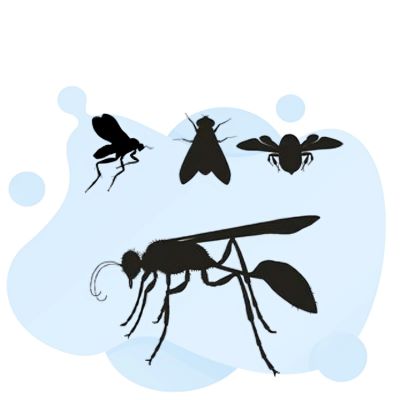
Nuisance wildlife control is focused on wildlife biology, behavior, and managing damage. Nuisance Wildlife Control Operators (NWCOs) work with state agencies like the Department of Environmental Conservation (DEC). They help solve problems where wildlife and humans interact and work within many laws.
Getting a license to be an NWCO means you can legally deal with wildlife. This involves capturing, holding, and moving wildlife. But, this is only allowed if you follow local, state, and federal rules.
The NWCO test is key for those aiming to become a professional in this field. This guide will give you the scoop on the NWCO test, the important role NWCOs play, and advice on how to study and pass the exam.
Nuisance wildlife control deals with the issues caused by wild animals. This field focuses on solving problems by stopping wildlife from coming into contact with people or their property. Methods include excluding animals, changing the environment, and safely catching them. Nuisance Wildlife Control Operators (NWCOs) help the public deal with wildlife trouble. They are licensed and trained by the Department of Environmental Conservation (DEC) to do this. Their work is important for keeping people safe and supporting wildlife conservation.
This field involves getting rid of animal-caused damages. Problems may include animals digging up the ground, making nests, leaving droppings, and causing safety worries. Common offenders are squirrels, raccoons, skunks, and some birds like pigeons and woodpeckers. These animals can occupy our living spaces, causing a lot of bother to homeowners.
NWCOs are licensed to help both property owners and wildlife. They assist the DEC by addressing wildlife issues the government can’t tackle alone. By providing their services, they support the DEC’s wider goals, including wildlife health and reducing animal-related damages.
The NWCO program ensures a clear process is followed when dealing with wildlife issues. They are allowed to manage specific animal species for business needs. This means they are experts in handling certain types of wild visitors.
| Key Responsibilities of NWCOs | Benefits to Wildlife Management |
|---|---|
|
To become a certified Nuisance Wildlife Control Operator (NWCO), you must pass a state exam. This exam tests your knowledge of how to manage nuisance wildlife properly and safely. The training teaches you the ins and outs of handling different wild animal problems while following the law.
The National Wildlife Control Training Program (NWCTP) has a detailed training manual and online classes. They teach key skills for dealing with nuisance wildlife, like identifying species and using safe traps. A 400-page manual highlights more than 25 nuisance species and gives a full picture of the job.
On top of the NWCTP, the New York State Department of Environmental Conservation helps by offering more info. Their materials focus on five goals, including managing animal populations, teaching the public, and preventing damage.
The DEC depends on NWCOs to help with wildlife management. NWCOs deal with wildlife complaints, work with other experts, and help educate the public. Their work supports the DEC in keeping wildlife populations healthy and reducing conflicts with people.
This partnership is crucial for wildlife conservation and public trust. NWCOs show the right way to deal with nuisance wildlife, preventing bad actions towards animals. This helps address the public’s worries about wildlife in the best way possible.
| NWCTP Training Program | DEC Wildlife Management Goals |
|---|---|
|
|
To get ready for the NWCO exam, check out the National Wildlife Control Training Program (NWCTP) materials. These include a detailed manual and online classes. The test links directly to this info. So, knowing this stuff well is essential for passing and getting your NWCO license. This license lets you deal with problem wildlife on other people’s properties legally, following the correct rules and laws.
The test has 90 questions, mixing true/false and multiple choice. About half the questions deal with animal diseases, what they eat, how they reproduce, and their behavior. The other part focuses on the laws and methods for capturing and removing these animals. To pass, you must show you know how to handle real situations with wildlife, follow the laws, and use effective wildlife control.
After passing the test, you’ll need to do 16 hours of education every four years. Otherwise, you have to take the exam again. You can choose from a list of courses. These include those from the Nuisance Wildlife Control Operator’s Association, State Trapper’s Education, or Furtakers of America Trapper’s College.
The NWCO Test is quite comprehensive. It covers:
Studying the NWCTP materials closely is key. It helps those aiming to become nwco stand the best chance of passing. This ensures they can provide quality wildlife removal certification and pest control licensing. They’ll be well-equipped to help their clients deal with wildlife problems.
| Barrier Fence Type | Cost per Linear Foot |
|---|---|
| Barrier Fences | $6 to $8 |
| Simple Electric Fences | $1 to $1.50 |
Good training in wildlife management and exclusion techniques is vital. It helps with keeping animals under control the right way, avoiding harm. By knowing what the NWCO Test involves and using the available help, nwco hopefuls can achieve their certification. This lets them offer top-quality wildlife removal services.
Becoming a NWCO (Nuisance Wildlife Control Operator) is key to supporting the DEC in managing wildlife. It involves taking a certification exam. This exam tests knowledge about animal control, including laws and humane techniques.
Those who pass and get a NWCO license help in important ways. They manage wildlife responsibly, support conservation, and start a fulfilling career in animal control. The certification shows they are skilled in solving issues between people and wildlife.
The NWCO certification is very useful for animal control careers. It keeps professionals updated on laws and techniques. This makes them vital in helping the DEC maintain wildlife and a healthy environment.